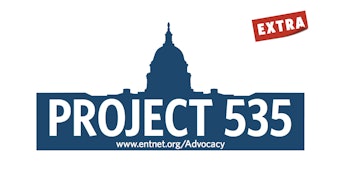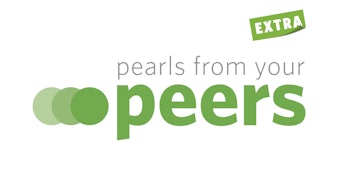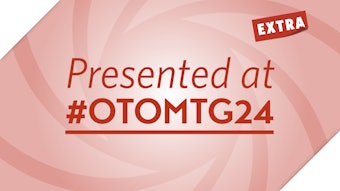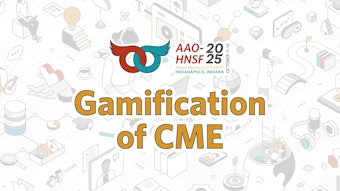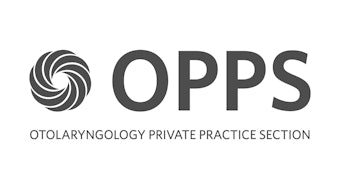What’s on My Mind: How We Can Navigate the AI Era
The author reviews physician compensation models, how AI might affect each, and proposes guardrails to ensure technological advancements support physician well-being.
Bradford G. Bichey, MD, MPH*

See the author’s disclosures at the end of this article.
As artificial intelligence (AI) continues to gain traction in healthcare, it promises to streamline clinical workflows, enhance diagnostic accuracy, and improve patient outcomes. However, the potential for increased efficiency may also bring unintended consequences for physicians—particularly when it comes to compensation models. If not carefully managed, the integration of AI can exacerbate work stress and burnout in an already strained physician workforce.
A recent study by Lui et al (2024) published in JAMA Network Open, “Artificial Intelligence and Radiologist Burnout,” uncovered increased burnout associated with AI use.1 They found that the increased burnout primarily stemmed from emotional exhaustion, driven by elevated work demands and overload. As we begin to navigate this new era of AI as otolaryngologists, it is important to consider the broad effects that AI adoption may have on our specialty. In addition to increasing the risks of burnout, AI will likely have unique effects on different compensation models in the future.
Below is an overview of the major physician compensation models, how AI might impact each model, and recommended guardrails to ensure that technological advancements support rather than undermine physician well-being.
Flat Salary Compensation
How It Works: Under a flat salary model, physicians receive a fixed annual salary regardless of patient volume or clinical output. Large hospital systems often favor this model for its predictability and for providing a baseline level of financial security to physicians.
How AI Could Affect This Model
- Potential for Increased Workload: Hospital administrators may be incentivized to schedule more patient visits, banking on perceived improvements in efficiency from AI tools. If leadership assumes a 400% increase in productivity, physicians could find their schedules booked at four times the usual rate—even if the real efficiency gain is only 200%.
- Risk of Burnout: An abrupt surge in patient volume, coupled with administrative tasks (such as electronic health record documentation supported by AI), can overwhelm physicians. Without proper controls, the pressure to handle significantly higher patient loads can drive emotional exhaustion.
Guardrails for Flat Salary Models
- Workload Caps: Implement clear policies that define maximum daily or weekly patient volumes, ensuring that AI-generated efficiencies do not automatically translate into unmanageable schedules.
- Protected Administrative Time: Allocate specific times for AI training, EHR documentation, and patient follow-ups to prevent after-hours workload creep.
- Regular Productivity Assessments: Continuously measure actual efficiency gains to adjust patient volume targets accordingly, preventing unrealistic scheduling expectations.
RVU-Based Compensation
How It Works: In an RVU (Relative Value Unit)-based system, physicians are compensated based on the volume and complexity of services rendered. Higher procedural or visit volumes typically result in higher compensation.
How AI Could Affect This Model
- Rising Productivity Targets: AI may enable physicians to complete more patient encounters or procedures in the same timeframe. However, as productivity rises, future contracts could demand even higher RVU thresholds for the same compensation.
- Burnout from Overbooking: If administrators view AI as a tool to increase patient throughput, physicians may face crowded schedules that lead to high stress and reduced quality of care.
Guardrails for RVU-Based Models
- Flexible RVU Targets: Reassess and adjust RVU thresholds regularly, considering realistic productivity gains and physician feedback.
- AI Utilization Policies: Clearly define how AI should be incorporated into clinical workflows to prevent unchecked growth in patient volume.
- Wellness Incentives: Link a portion of compensation to physician wellbeing metrics or team-based efficiency rather than raw volume alone, encouraging balance and collaboration.
Outcomes-Based Compensation
How It Works: Outcomes-based compensation ties payment to measurable clinical metrics (e.g., hospital readmission rates, complication rates, and quality-of-care indicators). The premise is to reward higher-quality, cost-effective care rather than high-volume care.
How AI Could Affect This Model
- Data Manipulation Risks: AI can influence how outcomes are tracked and reported. While AI-driven decision support tools can increase standardization, there is a risk that metrics are artificially optimized without genuinely improving patient care.
- Potential for Forced AI Adoption: Employers may require physicians to use AI solutions to achieve certain outcomes. This mandate can lead to increased administrative work and potentially busier workflows if efficiency metrics become tied to AI utilization.
Guardrails for Outcomes-Based Models
- Transparent Metrics: Develop clear and standardized definitions for clinical outcomes to minimize the risk of data manipulation.
- Shared Decision-Making: Involve physicians and multidisciplinary teams in selecting and reviewing outcome targets, ensuring alignment with evidence-based practice rather than mere administrative priorities.
- Ethical AI Implementation: Establish guidelines that specify the responsible use of AI, emphasizing patient-centered care over arbitrary performance indicators.
Patient Satisfaction-Based Compensation
How It Works: In this model, a portion of a physician’s compensation is tied to patient satisfaction scores. The aim is to reward clinicians who deliver positive patient experiences.
How AI Could Affect This Model
- Perception Versus Reality: Even if AI streamlines clinical tasks and reduces wait times, patient perceptions of care quality may not automatically improve.
- Potential for Higher Patient Volume: Administrators might see AI as an avenue to schedule more patients with the expectation of maintaining or improving satisfaction. This can backfire if reduced face-to-face time erodes trust and rapport, ultimately affecting satisfaction scores.
Guardrails for Patient Satisfaction-Based Models
- Realistic Scheduling: Limit the use of AI in scheduling to ensure adequate face-to-face time, preserving high-quality patient-physician interactions.
- Quality Over Quantity: Weigh patient satisfaction metrics alongside quality and safety measures, preventing undue pressure to see more patients at the expense of care quality.
- Training for Patient Engagement: Provide physicians with both AI training and communication skills development to improve patient interactions without overreliance on technology.
Collections-Based Compensation
How It Works: Collections-based compensation is commonly used by solo or small group practices, including cash-pay models. Here, physician income is directly tied to the revenue generated from patient visits, procedures, and services.
How AI Could Affect This Model
- Potential Efficiency Gains: AI can help streamline administrative tasks (e.g., billing, documentation), allowing physicians to maintain or increase revenue with fewer work hours.
- Workload Flexibility: Smaller practices can more nimbly control patient volume and workflow, potentially realizing the benefits of AI without the pressure of large health systems pushing for ever-increasing output.
Guardrails for Collections-Based Models
- Balanced Implementation: Deploy AI solutions that genuinely reduce administrative burdens rather than just accelerating patient throughput.
- Ethical Billing Practices: Maintain transparency in coding and billing processes, even if AI automates these tasks, to avoid regulatory pitfalls.
- Scalable Growth: As the practice grows with AI-driven efficiencies, ensure staff and resources scale accordingly to prevent hidden stressors and burnout.
Conclusion
AI holds remarkable promise for transforming healthcare delivery, from improving diagnostic accuracy to streamlining documentation. However, physicians must remain vigilant about how these technologies intersect with their compensation models. Without appropriate guardrails—such as workload caps, transparent outcome metrics, and carefully designed incentive structures—AI can inadvertently exacerbate burnout and undermine the very productivity gains it promises.As we stand on the cusp of an AI-driven era in healthcare, it is incumbent upon both healthcare administrators and physicians to ensure that the implementation of these tools aligns with clinical realities, patient needs, and physician well-being. By proactively setting clear parameters for AI utilization, each compensation model can evolve to harness AI’s potential while safeguarding the quality of care and professional satisfaction of the U.S. physician workforce.
Author Disclosures: Dr. Bichey is the founder of Indiana Sinus Centers, and founder/CEO of Nemedic, Inc.
Disclaimer: This article does not constitute the endorsement of any product, and all opinions are those of the author and may or may not be shared by the AAO-HNS.
Reference
- Liu H, Ding N, Li X, et al. Artificial Intelligence and Radiologist Burnout. JAMA Netw Open. 2024;7(11):e2448714. doi:10.1001/jamanetworkopen.2024.48714

